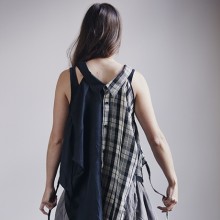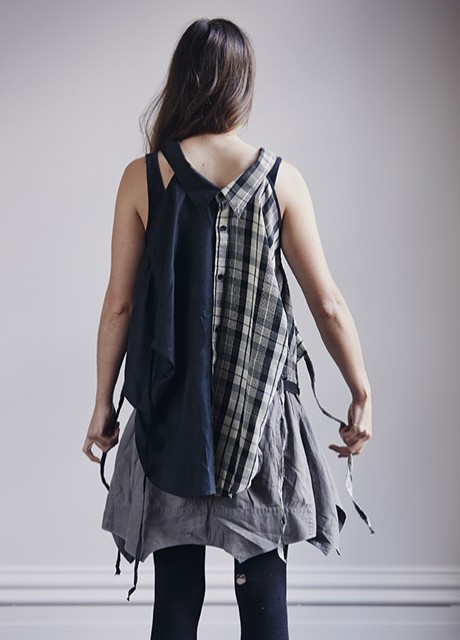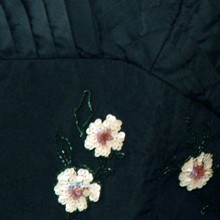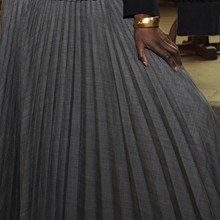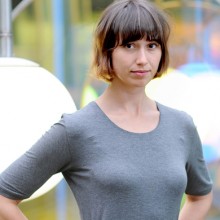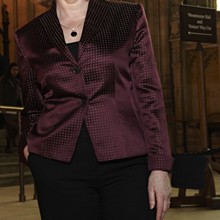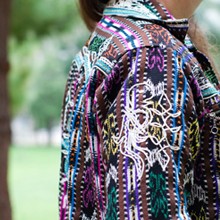
Flexible Thinking
Wearing the same piece but with with a fluid attitude of openness and flexibility can find novelty in new places. The garment itself stays the same, but the rules and roles of wearing it are re-interpreted. Use is intensified; resources are saved; individuality is reclaimed.
Multiple functions take time
"I brought a top made out of two shirts, two men’s shirts. I have cut it up and made it into a new ladies’ top, so half it is silk and half of it is polyester. You can totally unbutton the two halves from each other. So it means that you can wash [the two halves] separately, but it actually means that one side crinkles much more than the other, so I only have to iron half of that (laughs).
And I guess because it had a life as something else, it has this kind of memory that comes with it and whether that’s the feeling that I get from that always knowing that the pocket are in this slightly awkward position and also other people’s recognition of that when they see me in it. It had to be made from two shirts that had the same collar width… I discovered after I made the other ones what the criteria is for the next pieces that go together. Which is complicated (laughs). You [can wear it without the second half], you can actually unbutton it off and put that over your head and wear it as a halter-top.
But I’ve also found that when I’ve had multifunctional pieces I don’t really find the second function until I’ve owned it for a number of years. It is not something that I necessarily interchange, weekly. It might be I wear it one way for a year or two and then I discover how the other way now works. That sort of helps the longevity of a piece that might not be immediately apparent."
Melbourne - March 2013
Photograph by
Paul Allister






